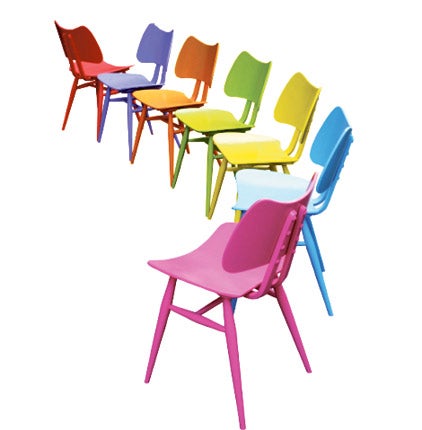The Secret History Of: The Ercol Butterfly chair

Your support helps us to tell the story
From reproductive rights to climate change to Big Tech, The Independent is on the ground when the story is developing. Whether it's investigating the financials of Elon Musk's pro-Trump PAC or producing our latest documentary, 'The A Word', which shines a light on the American women fighting for reproductive rights, we know how important it is to parse out the facts from the messaging.
At such a critical moment in US history, we need reporters on the ground. Your donation allows us to keep sending journalists to speak to both sides of the story.
The Independent is trusted by Americans across the entire political spectrum. And unlike many other quality news outlets, we choose not to lock Americans out of our reporting and analysis with paywalls. We believe quality journalism should be available to everyone, paid for by those who can afford it.
Your support makes all the difference.It might look like a fairly standard kitchen chair but the Ercol Butterfly was groundbreaking when it first launched. What's more, the clean, simple lines of postwar British design are still as fashionable today as they were 50 years ago.
The chair's designer, Lucian Randolph Ercolani, arrived in London from his native Florence in 1894. His great grandfather was an evangelical preacher who had upset the Catholic rulers of his home city and the Salvation Army arranged to smuggle the family to England.
Ercolani went to Shoreditch College of Furniture and set up his own furniture factory, Ercol, in 1920. The Butterfly chair was launched in 1956 and although not the bestselling Ercol line (that is the more traditional Windsor) it is certainly the most iconic. Its clean lines and spare design are almost Scandinavian in simplicity, rather than the more flamboyant Italian style.
Ercolani had also perfected the technique of steam-bending wood into curves as well as drying elm with steam so that it wouldn't warp. These methods allowed him to produce both the classic Windsor and the curvy Butterfly.
Edward Tadros, Ercolani's grandson, says: "It was a revolutionary design at the time. It had the classic Windsor base but the seat was in bent ply and that curve was new. It's very comfortable, too, which is why it has endured.
"Lucian was always fiddling with the designs and the boardroom is full of prototypes that didn't quite work or didn't last very long."
Despite its status as a modern design classic, the Butterfly never sold in huge amounts and even went out of production in the 1980s.
Then in 2000, the designer Margaret Howell asked if Ercol would make her a few Butterflies for her shops. Then, to Ercol's surprise, Howell kept selling them and asking for more. "Thanks to her, sales of the Butterfly started creeping up again and so we put it back into production," says Tadros. "I think it has lasted this long because not only is it very comfortable but it's very simple and very pretty".
This year, the Butterfly was relaunched in a series of rainbow colours and a matt-black version. So if you like your design classics classic, then stick to the original elm or beech. If you like your design classics redesigned, then choose from a palate of red, orange, yellow, green, blue, mauve and pink.
Join our commenting forum
Join thought-provoking conversations, follow other Independent readers and see their replies
Comments